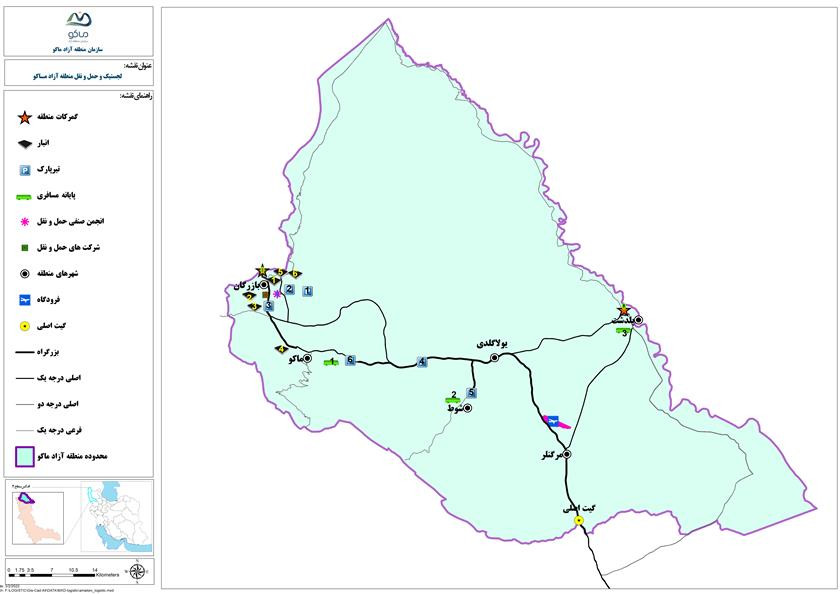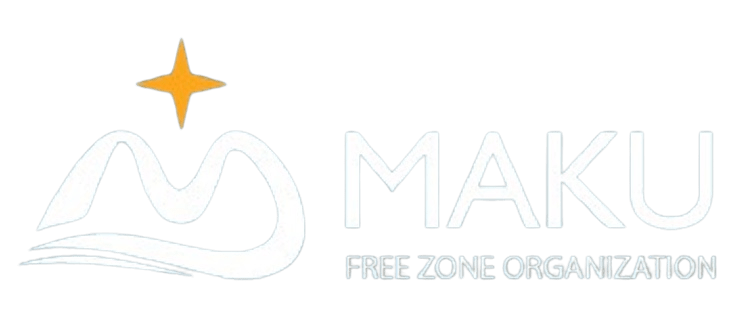
Business Sections

Investment Advantages

Investment Systems

Active Businesses

Active Businesses

Company Registration
Bank, Exchange and ...

International Exhibition
Business Sections in the Zone
Logistics, based on global trends and geostrategic developments, has the potential to turn into one of the serious sections of economic development and growth of the country in the coming decades, in which the role of free zones as a key factor in this field is prominent. Meanwhile, in the studies of the strategic-structural plan (comprehensive) of Maku Free Zone, logistics has been identified as the driving force and the core business of Maku Free Zone, and according to the economic studies, this plan will have the largest share (more than 30%) of GDP in the region. The location of Bazargan border as the most important land border of the country and the gateway to Europe and the existence of numerous logistics centers and high volume of transit through this region, nearly 700 on-stream domestic and international transport companies, 1000 trucks’ daily traffic, loading and unloading hundreds of tons at customs daily, existence of more than 2,000 transport fleets, employment of about 6,000 people in the field of transportation and logistics, being located in the Chinese land transit corridor to Europe, launching projects such as the new Iran-Turkey railway connection (Tabriz-Kars) crossing Maku Free Zone, designing the establishment of an international logistics village, constructing international smart terminals and smart parking lots, have turned planning and developing the logistics sector to one of the main missions of Maku Free Zone Organization.
Holding great economic potential, Maku Free Trade-Industrial Zone has always been known for its green nature and high agricultural potential. Having suitable climatic conditions with cold winters and mild summers and pristine nature, diverse vegetation and medicinal plants, six permanent rivers, seven dams, various springs such as Sorayya spring, fertile lands including Zanganeh plain with an area of 8800 hectares along with other plains, possibility of establishing conversion industries and various factories, has brought about a zone with high agricultural potential.
Out of the total land area of the zone, 94,000 hectares can be cultivated, of which 53% is irrigated land and 47% is rainfed land. Most of these lands are owned by the local community.
The region’s agricultural products include cereals, grains, cotton, castor and sesame, apple, grape, pear, walnut and almond.
In 2020-2021, the production of crops amounted to 203 thousand tons, more than 11 thousand tons horticultural products, 27 thousand tons livestock products, more than 4 thousand tons fisheries and aquaculture and 382 tons honey.
There are 26,950 heavy livestock and 64,6257 light livestock, 61 industrial poultry units, 65 industrial livestock units, 32,348 beehive colonies and 26 fish farms in Maku Free Zone.
The average rainfall in the region is 230 to 250 mm per year and its water resources originates from 6 rivers that originate mainly from the border mountains of Iran and Turkey.
In Maku Free Zone, there are 12 dams that have been studied and implemented, of which 9 dams have been put into operation.
There are totally six Industrial Parks in Maku Free Zone- the ownership of two Parks is at the disposal of the organization and 4 Parks are at the disposal of the Industrial Parks Company. Maku Free Zone has an area of 582 hectares, of which 69 hectares have been definitely handed over and 123 hectares are ready to be handed over.
This region has 122 active industrial and mining units, 68 of which are located within industrial estates. 47% of industrial units are active in the field of metallic and non-metallic minerals, 16% in chemical, 15% in food and medicine, 10% in textile and 12% in the field of cellulose, electricity and electronics. Of these active industrial units there are 41 mini units, 54 small units, 8 medium units and 4 large units. At present, all administrative affairs and processes, including the issuance of various licenses and land assignment for the implementation of production projects have been conducted by this management. Currently, there are more than 500 industrial investment licenses (Establishment licenses) and 199 industrial exploitation licenses (Exploitation license) have been issued in various fields. The industry focuses on the formation of export-oriented production units in order to meet domestic needs and reduce imports.
Maku Free Zone, the largest free zone in the country, is unique due to having special geological conditions and mines among the free zones of the country and is the only free zone which has a variety of mines with high reserves. Mines and mineral potentials of the region include all kinds of decorative stones (travertine and marble), magnesite, silica, copper, iron, basalt and construction materials (gypsum, lime, pumice, and sand) and a variety of minerals. The diversity and abundance of minerals promises a bright future in the mining sector and mining industries.
Maku Free Zone is the only free zone in the country with very high mineral potentials. There are currently 15 active mining units in the zone. The main mines in this zone are building stones and facades. In addition, metal mines such as copper (Qara Tappeh and Qara Aghaj copper), iron and non-metallic mines such as silica (Ilan Qara and Issa Khan) and magnesite as well as minerals of stone slates, industrial basalt, sand, lime, gypsum are considered as a potentials of the zone.
Mining affairs have been entrusted to Maku Free Zone Organization since 2016, and during this period, by taking advantage of the capabilities of the best experts, significant measures have been taken to boost the mining activities of the region. Due to the existence of various mines of decorative stones, metallic deposits such as copper and iron, and non-metallic deposits such as limestone, magnesite and silica and tracks of phosphate, bauxite, cobalt, lead, zinc and cadmium there will be a huge and significant developmnt in the mining activities of the region.
Maku Free Zone, a lost land in history and geography, houses a hint of beauty and grandeur of creation in itself. This zone is a land of wonders regarding nature and history. Maku Free Zone encompasses the cities of Maku, Showt and Poldasht, which has an area of about 400,000 hectares and is the largest free zone in Iran and the second largest free zone in the world after Shanghai Free Zone in China. This zone by itself occupies about 80% of all free zones of the country and having 130 Km border with the Republic of Turkey and 140 Km with the Republic of Azerbaijan (Nakhchivan) is one of the wealthiest free zones in the country. It has about 120 Km of international transit corridor in itself connecting north to south and east to west.
Vast fertile plains, lush pastures, mountainous landscapes and massive rock walls, hot springs, perennial and seasonal rivers, various lakes with enchanting nature, open mouth caves, heavenly springs, castles, palaces and mansions and border markets all together with their amazing beauty represent this zone in the most beautiful way.
Due to its natural and climatic features, ancient civilization, many historical attractions, natural beauties, pristine and untouched nature, diverse climatic conditions in four seasons, unique historical places and buildings from ancient times, Nomadic handicrafts and above all warm-hearted and hospitable people have turned this zone into one of the most important tourism hubs in the northwest of the country.
Logistics, based on global trends and geostrategic developments, has the potential to turn into one of the serious sections of economic development and growth of the country in the coming decades, in which the role of free zones as a key factor in this field is prominent. Meanwhile, in the studies of the strategic-structural plan (comprehensive) of Maku Free Zone, logistics has been identified as the driving force and the core business of Maku Free Zone, and according to the economic studies, this plan will have the largest share (more than 30%) of GDP in the region. The location of Bazargan border as the most important land border of the country and the gateway to Europe and the existence of numerous logistics centers and high volume of transit through this region, nearly 700 on-stream domestic and international transport companies, 1000 trucks’ daily traffic, loading and unloading hundreds of tons at customs daily, existence of more than 2,000 transport fleets, employment of about 6,000 people in the field of transportation and logistics, being located in the Chinese land transit corridor to Europe, launching projects such as the new Iran-Turkey railway connection (Tabriz-Kars) crossing Maku Free Zone, designing the establishment of an international logistics village, constructing international smart terminals and smart parking lots, have turned planning and developing the logistics sector to one of the main missions of Maku Free Zone Organization.
Holding great economic potential, Maku Free Trade-Industrial Zone has always been known for its green nature and high agricultural potential. Having suitable climatic conditions with cold winters and mild summers and pristine nature, diverse vegetation and medicinal plants, six permanent rivers, seven dams, various springs such as Sorayya spring, fertile lands including Zanganeh plain with an area of 8800 hectares along with other plains, possibility of establishing conversion industries and various factories, has brought about a zone with high agricultural potential.
Out of the total land area of the zone, 94,000 hectares can be cultivated, of which 53% is irrigated land and 47% is rainfed land. Most of these lands are owned by the local community.
The region’s agricultural products include cereals, grains, cotton, castor and sesame, apple, grape, pear, walnut and almond.
In 2020-2021, the production of crops amounted to 203 thousand tons, more than 11 thousand tons horticultural products, 27 thousand tons livestock products, more than 4 thousand tons fisheries and aquaculture and 382 tons honey.
There are 26,950 heavy livestock and 64,6257 light livestock, 61 industrial poultry units, 65 industrial livestock units, 32,348 beehive colonies and 26 fish farms in Maku Free Zone.
The average rainfall in the region is 230 to 250 mm per year and its water resources originates from 6 rivers that originate mainly from the border mountains of Iran and Turkey.
In Maku Free Zone, there are 12 dams that have been studied and implemented, of which 9 dams have been put into operation.
There are totally six Industrial Parks in Maku Free Zone- the ownership of two Parks is at the disposal of the organization and 4 Parks are at the disposal of the Industrial Parks Company. Maku Free Zone has an area of 582 hectares, of which 69 hectares have been definitely handed over and 123 hectares are ready to be handed over.
This region has 122 active industrial and mining units, 68 of which are located within industrial estates. 47% of industrial units are active in the field of metallic and non-metallic minerals, 16% in chemical, 15% in food and medicine, 10% in textile and 12% in the field of cellulose, electricity and electronics. Of these active industrial units there are 41 mini units, 54 small units, 8 medium units and 4 large units. At present, all administrative affairs and processes, including the issuance of various licenses and land assignment for the implementation of production projects have been conducted by this management. Currently, there are more than 500 industrial investment licenses (Establishment licenses) and 199 industrial exploitation licenses (Exploitation license) have been issued in various fields. The industry focuses on the formation of export-oriented production units in order to meet domestic needs and reduce imports.
Maku Free Zone, the largest free zone in the country, is unique due to having special geological conditions and mines among the free zones of the country and is the only free zone which has a variety of mines with high reserves. Mines and mineral potentials of the region include all kinds of decorative stones (travertine and marble), magnesite, silica, copper, iron, basalt and construction materials (gypsum, lime, pumice, and sand) and a variety of minerals. The diversity and abundance of minerals promises a bright future in the mining sector and mining industries.
Maku Free Zone is the only free zone in the country with very high mineral potentials. There are currently 15 active mining units in the zone. The main mines in this zone are building stones and facades. In addition, metal mines such as copper (Qara Tappeh and Qara Aghaj copper), iron and non-metallic mines such as silica (Ilan Qara and Issa Khan) and magnesite as well as minerals of stone slates, industrial basalt, sand, lime, gypsum are considered as a potentials of the zone.
Mining affairs have been entrusted to Maku Free Zone Organization since 2016, and during this period, by taking advantage of the capabilities of the best experts, significant measures have been taken to boost the mining activities of the region. Due to the existence of various mines of decorative stones, metallic deposits such as copper and iron, and non-metallic deposits such as limestone, magnesite and silica and tracks of phosphate, bauxite, cobalt, lead, zinc and cadmium there will be a huge and significant developmnt in the mining activities of the region.
Maku Free Zone, a lost land in history and geography, houses a hint of beauty and grandeur of creation in itself. This zone is a land of wonders regarding nature and history. Maku Free Zone encompasses the cities of Maku, Showt and Poldasht, which has an area of about 400,000 hectares and is the largest free zone in Iran and the second largest free zone in the world after Shanghai Free Zone in China. This zone by itself occupies about 80% of all free zones of the country and having 130 Km border with the Republic of Turkey and 140 Km with the Republic of Azerbaijan (Nakhchivan) is one of the wealthiest free zones in the country. It has about 120 Km of international transit corridor in itself connecting north to south and east to west.
Vast fertile plains, lush pastures, mountainous landscapes and massive rock walls, hot springs, perennial and seasonal rivers, various lakes with enchanting nature, open mouth caves, heavenly springs, castles, palaces and mansions and border markets all together with their amazing beauty represent this zone in the most beautiful way.
Due to its natural and climatic features, ancient civilization, many historical attractions, natural beauties, pristine and untouched nature, diverse climatic conditions in four seasons, unique historical places and buildings from ancient times, Nomadic handicrafts and above all warm-hearted and hospitable people have turned this zone into one of the most important tourism hubs in the northwest of the country.
Advantages of Investment and Economic Activity in Free Zones
Legal advantages
- Having advantage of value added law
- ۲۰-year tax exemption for various economic activities from the date of operation
- Duty exemption of raw materials and production machinery import (customs duties and commercial profits)
- Duty exemption for export of products and re-export from the zone
- Dispatching products into the country under customs duties exemption up to the approval of the Value Added Commission of Free and Special Economic Zones
- Possibility of importing raw materials of group four to the zone, provided that 100% of the produced products are exported
- Possibility of partnership with foreign investors without limit on the proportion of partnership and possibility of 100% foreign investment
- Possibility of registering a company with 100% foreign shares
- Providing full guarantee of foreign investment by the government through the law of attraction and protection of foreign investment
- Providing monetary, banking and insurance services by banks and public and private insurances
- Possibility of renting land to foreign investors
- Possibility of establishing every kind of economic activity for foreign investors
- No need to obtain a visa for entry and exit of foreign nationals
- Issuance of residence permits for foreign nationals by the organization
The Relative and Unique Advantages of the Zone
- Having a peculiar position regarding transportation and transit of goods thanks to connection to the markets of Europe and Central Asia
- Having an airport with the possibility of international flights
- Turning 60 km of roads into highways in the zone
- Holding the largest and most important land customs in the country, namely Bazargan Customs in addition to Poldasht Customs
- Having developing logistics infrastructure (warehouses and smart parking lots) to facilitate exports and imports
- A significant part of Aras Border River as well as Aras and Karamabad dam are located in the zone
- Existence of large lands for agricultural activities (agriculture, horticulture, animal husbandry, fisheries)
- Existence of facade and decorative travertine stones, mine, basalt and marble stones and non-metallic minerals, magnesite, silica
- Existence of abundant natural, cultural and historical tourist attractions with the potential of developing nature tourism and ecotourism (existence of unique historical monuments such as Zor Zor churches, Qarah Kelisa, Baghcheh Jooq palace, the remnants of Urartu city etc. )
- Having a power plant with foreign investment
- Existence of developing cement factory and various construction materials
- Existence of gas transmission pipelines to supply gas required by industries
- Existence of industrial parks for specialized activities (light, semi-heavy, energy-intensive industries)
- Lying on the route of land tourists to Turkey and Europe paves the way for businesses to benefit from tourists
- Having significant young population and over 50,000-people workforce
- Existence of developing educational and health centers to serve the local community and investors
- Locating on one of the new Silk Road (OBOR) routes
- Neighborhood with Turkey and the Autonomous Republic of Azerbaijan
- Planning to connect Tabriz railway to Turkey through the zone
- Availability of energy and water resources and abundance of building materials
- Low-cost labor
- Possibility of establishing and expanding services in the field of ICT due to being on the path of European fiber optics;
- Assigning suitable land with minimum cost
Concept and Benefits of Value-Added Commission for Production Units Located in Free Zones
۱ -Import of Raw Materials
۱-۱ Import Duties:
According to paragraph 1-8 of the instructions and the executive method of the duty collection regulations in the free zones, the duties for importing raw materials and machinery are zero to ten percent of the CIF value and are determined by the board of directors of the organization. In Maku Free Zone in order to support production; it is considered zero (exempt from customs duties) (first important advantage).
۲-۱ Imported Raw Materials’ Registration Order
Pursuant to Article 14 of the Law on the Administration of Free Trade Zones, trade with foreign countries after customs registration (declaration) is excluded from the scope of export and import regulations, and according to the Court’s decision to import any goods (other than goods prohibited by law or Sharia) there is no need to register a customs order (exempt from order registration) from abroad to free zones (second important advantage). While in the mainland, the import of any kind of goods requires an order register.
(Important Note: According to Article 3 of the Regulations on Export, Import and Customs Affairs of the Free Zones, it is necessary for all goods imported to the Free Zones to be registered statistically (the entire process is done by the organization itself).
The above legal advantages are applicable if the process of determining the added value of the activity of the production unit and the sale of products happen within the free zone, and in case of sale and export outside the zone, it is only possible to other free zones or abroad. In other words, in case of export of the product to the mainland, the customs laws of the mainland will apply, but the mentioned exemptions will not be completely eliminated, but part of the two exemptions mentioned above will remain in force. In this case, the production unit is required to:
۱- Customs clearance: payment of part of customs duties on raw materials (only for the total volume of exported product to the mainland)
۲- Order registration of raw material: for a part of the volume of exported product (so-called surplus of allowed percentage) to the mainland
In other words, the exemption from paying customs duties on raw materials (for the entire product export to the mainland) will be up to the value added percentage and the exemption from registering the order will be up to the permitted percentage of goods to enter the mainland.
(The aforementioned percentages will be announced by the Value Added Commission. Further explanations are provided below)
Important Note:
It is forbidden to register an order without transferring currency to free zones. For some of the production units applying for Nimayi currency, according to the agreement made with the Central Bank, it is possible to register an order as a free zone trader using bank currency procedure or from the export of raw materials used in products exceeding the permitted percentage of goods entering the mainland.
۲- Article 15 of the Law on Administering Free Zones:
Imports of goods produced in the free zones to other parts of the country, up to added value [1] in that zone with the approval of the Council of Ministers [2] are exempt from payment of all or part of customs duties and commercial profits [3]. (It can be claimed that the most important legal advantage of free zones originates from this legal article)
In general, for each production unit, the following 3 cases are considered regarding the type of supply of raw materials:
۱- All from inland
۲- All from abroad
۳- Part of it from inland and part of it from abroad.
The above legal advantages apply to production units. The process is such that after setting up the unit and at the production stage, the exploitation license is issued by the organization. In case of supply of raw materials (in whole or in part) from abroad and the desire of the production unit to benefit from the benefits of the above value added commission, the relevant forms are completed and after the approval of the expert of Organization and the Secretariat of the Supreme Council of zones, in the meeting of the Value Added Commission (with the approval of the Council of Ministers, the authority and responsibility for this issue is assigned to the Value Added Commission) and percentages of “permitted goods import to the mainland” and “added value” are determined.
Investment Request Registration System
Investment Outside Industrial Parks (National and personal lands)
Submit a New Request
Tracking Previous Request
Investment Guide (Required process and documents)
Investment in Industrial Parks
Submit a New Request
Tracking Previous Request
Investment Guide (Required process and documents)
Trade and Commerce in Maku Free Zone
Free trade zones are parts of the territory of Iran that are governed by special laws and regulations and are basically exempt from the laws governing the mainland. In fact, these areas are beyond the scope of customs authority (customs law) and enjoy more freedom in transferring goods in and out. Unique geographical locations, well-developed infrastructure and foreign investment incentives have provided many opportunities for trade as well as domestic and foreign investment in the zones. In describing the position of trade and business in the free zones, it suffices to know that the United Nations (UNIDO) has defined the free zones as a “stimulus” to industrial exports. In Maku Free Zone, due to speed of business processes, a suitable environment has been created to increase the volume of trade, for many commercial and industrial activities in comparison with other parts of the country, especially in the export sector. The legal advantages such as easy import of raw materials and machinery and the export of products in Maku Free Zone, alongside with the efforts of the experts and managers of this organization, have turned Maku Free Zone into a land of golden opportunities for investment. The main advantages of Maku Free Trade Zone in the field of trade and commerce are as follows:
- Placement of Bazargan Customs as the largest land customs in the country as the country’s communication highway (rival of the Suez Canal on land)
- Location of Poldasht border terminal on the route to Azerbaijan and Iran’s relations with Armenia, Azerbaijan and the Caucasus have led to a boom in the country’s economic relations with North Asia and Europe.
- Possibility of importing machinery and raw materials of industrial and service units in the shortest possible time without the need for a business card and time-consuming currency procedures
- Export of the final product to the mainland and payment of customs duties and commercial profits based on raw materials
- Import of commercial goods from the region to the mainland with less commercial profit than other customs
- Possibility of importing 950 items of group 4 goods as passenger goods for tourists in the region (importing to the mainland outside the free zones is banned)
- Transit and re-export of foreign goods with the least bureaucracy and operating costs
- Special geoeconomic position and location on the Silk Road and the trade confluence of Europe and Central Asia
- Being the closest free zone to Europe, the CIS market, the Caucasus and Russia
- Freedom of flow and outflow of capital and developing profits from economic activities in industrial free trade zones
In recent years, the region’s trade balance (export-to-import ratio) has always been positive. During the 11 months of 1400, the export of goods and services from the region to abroad was more than 60 million dollars. The largest share of goods entering the region is related to machinery and raw materials of production and service units located in Maku Free Zone, which are only for industrial activities and ultimately boosting employment and GDP. In fact, most of the goods imported to the region are for processing and production, which is far more than the goods that have entered the region as manufactured products. To clarify the amount of trade in Maku Free Trade Zone, one can refer to the vast amount of trade that commercial and customs infrastructure has provided to help the national economy. Due to the special location of the zone and the existence of facilitator infrastructure, the amount of goods exports from this region to abroad in the first eight months of 1400 is more than two billion dollars. The main export commodity groups are petrochemical products, vegetable, agricultural products and stone. During the mentioned period, the value of goods transit was more than 13 billion dollars, which indicates the extensive trade activity and the importance of Maku Free Zone in the world trade corridor. Most of the goods imported from the region were machinery, vehicles and raw materials.
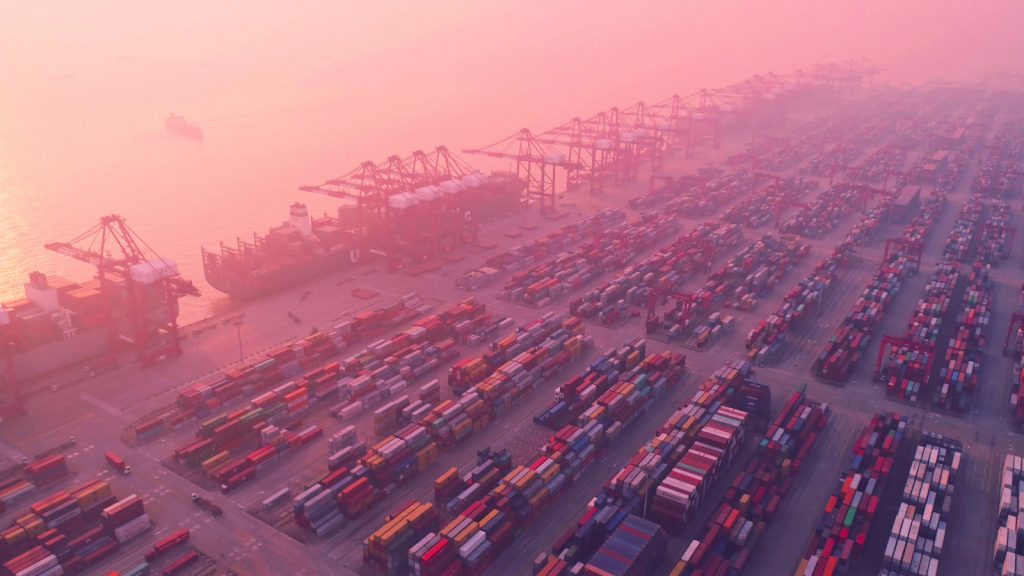
Free trade zones are parts of the territory of Iran that are governed by special laws and regulations and are basically exempt from the laws governing the mainland. In fact, these areas are beyond the scope of customs authority (customs law) and enjoy more freedom in transferring goods in and out. Unique geographical locations, well-developed infrastructure and foreign investment incentives have provided many opportunities for trade as well as domestic and foreign investment in the zones. In describing the position of trade and business in the free zones, it suffices to know that the United Nations (UNIDO) has defined the free zones as a “stimulus” to industrial exports. In Maku Free Zone, due to speed of business processes, a suitable environment has been created to increase the volume of trade, for many commercial and industrial activities in comparison with other parts of the country, especially in the export sector. The legal advantages such as easy import of raw materials and machinery and the export of products in Maku Free Zone, alongside with the efforts of the experts and managers of this organization, have turned Maku Free Zone into a land of golden opportunities for investment. The main advantages of Maku Free Trade Zone in the field of trade and commerce are as follows:
- Placement of Bazargan Customs as the largest land customs in the country as the country’s communication highway (rival of the Suez Canal on land)
- Location of Poldasht border terminal on the route to Azerbaijan and Iran’s relations with Armenia, Azerbaijan and the Caucasus have led to a boom in the country’s economic relations with North Asia and Europe.
- Possibility of importing machinery and raw materials of industrial and service units in the shortest possible time without the need for a business card and time-consuming currency procedures
- Export of the final product to the mainland and payment of customs duties and commercial profits based on raw materials
- Import of commercial goods from the region to the mainland with less commercial profit than other customs
- Possibility of importing 950 items of group 4 goods as passenger goods for tourists in the region (importing to the mainland outside the free zones is banned)
- Transit and re-export of foreign goods with the least bureaucracy and operating costs
- Special geoeconomic position and location on the Silk Road and the trade confluence of Europe and Central Asia
- Being the closest free zone to Europe, the CIS market, the Caucasus and Russia
- Freedom of flow and outflow of capital and developing profits from economic activities in industrial free trade zones
In recent years, the region’s trade balance (export-to-import ratio) has always been positive. During the 11 months of 1400, the export of goods and services from the region to abroad was more than 60 million dollars. The largest share of goods entering the region is related to machinery and raw materials of production and service units located in Maku Free Zone, which are only for industrial activities and ultimately boosting employment and GDP. In fact, most of the goods imported to the region are for processing and production, which is far more than the goods that have entered the region as manufactured products. To clarify the amount of trade in Maku Free Trade Zone, one can refer to the vast amount of trade that commercial and customs infrastructure has provided to help the national economy. Due to the special location of the zone and the existence of facilitator infrastructure, the amount of goods exports from this region to abroad in the first eight months of 1400 is more than two billion dollars. The main export commodity groups are petrochemical products, vegetable, agricultural products and stone. During the mentioned period, the value of goods transit was more than 13 billion dollars, which indicates the extensive trade activity and the importance of Maku Free Zone in the world trade corridor. Most of the goods imported from the region were machinery, vehicles and raw materials.
Company Registration in Maku Free Zone
Iranians Citizens
Non-Iranians
Iranians Citizens
Non-Iranians
Iranians Citizens
Non-Iranians
Iranians Citizens
Non-Iranians
Iranians Citizens
Non-Iranians
Iranians Citizens
Non-Iranians
Iranians Citizens
Non-Iranians
Phone: 04434376094 and 0443100 (Intercom: 420 to 422)
Phone:
۰۴۴۳۴۳۷۶۰۹۴
۰۴۴۳۱۰۰ (intercom: 420 to 422)
Banks, Exchange Offices and Insurance Companies
Banks, Exchange Offices and Insurance Companies
Maku International Exhibition
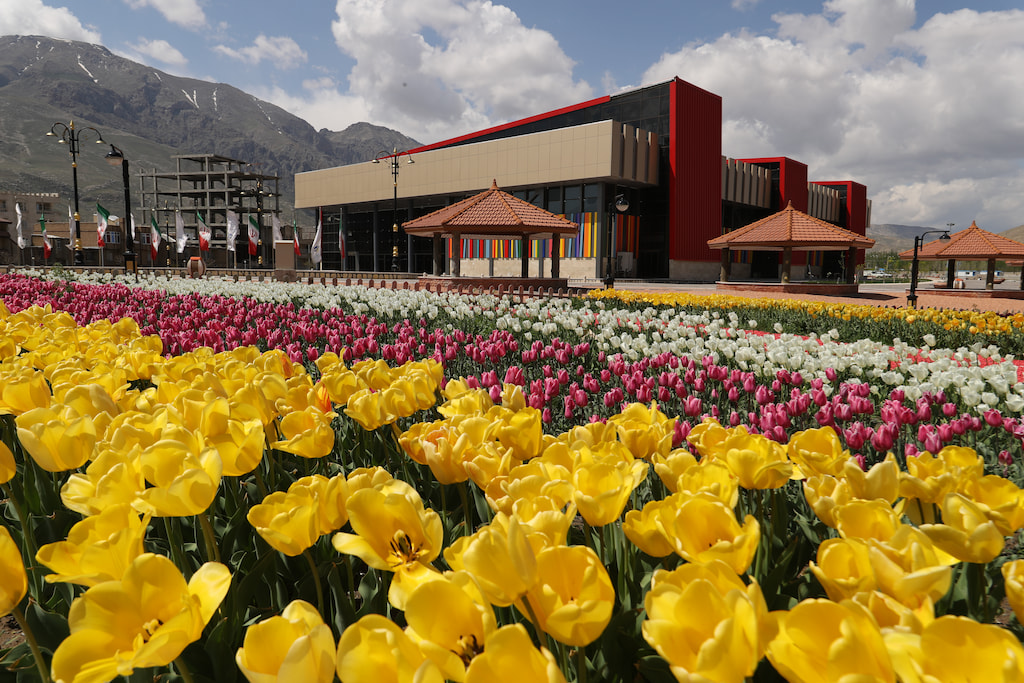
Maku Free Zone International Exhibitions and Conferences Center was opened in December 2016 and so far more than 30 exhibitions including construction industry, carpets and handicrafts, furniture and home appliances, local products, agriculture, livestock and poultry, etc. have been held with great success and unparalleled participation in this place. This exhibition center is located next to Imam Khomeini Park in Maku and has about 4500 square meters of roofed exhibition hall and has about 1500 square meters of open air exhibition space. The goal of the exhibition is to sparkle nationally and internationally and become a brand at the border of Iran and Europe. Therefore, it tries to have the highest quality on holding the exhibitions.
Exhibition Calendar
| Row | ||||||
|---|---|---|---|---|---|---|
| ۱ | Waiting for loading... | From 2022/00/00 To 2022/00/00 | Maku Free Zone Organization | Waiting for loading... | Waiting for loading... | Get |
| ۲ | Waiting for loading... | --- | --- | --- | --- | --- |
| ۳ | Waiting for loading... | --- | --- | --- | --- | --- |
| ۴ | Waiting for loading... | --- | --- | --- | --- | --- |
Investment and Development Company of Maku Free Zone
Investment and Development Company of Maku Free Zone
All Rights Reserved to Maku Free Zone Organization.
